Imagine this: you walk into a wine bar, ready for a relaxing evening. The bartender doesn’t ask what you like. No questions about whether you prefer full-bodied reds or crisp whites. Instead, he pours the same house blend into every glass, for every guest, no matter what. Cheers?
That’s exactly what most wine brands have been doing with their marketing—pouring the same pitch into every glass, hoping it’ll magically satisfy everyone. But in today’s world of conscious consumers, diverse tastes, and digital overload, that approach is not just outdated—it’s dangerous.
Let’s uncork the truth about customer segmentation in the wine industry, and how it can turn your brand from background noise into a personal invitation your audience can’t resist.
Why One-Size-Fits-All Marketing Is Failing Wine Brands
Think back to the last time you received a marketing email that truly spoke to you. Not just your name slapped on the top, but something that made you feel seen—like they knew your preferences, your mood, even what kind of night you were planning. Feels good, right?
Now flip that. Imagine being a vegan who gets a promo for a wine-and-steak pairing night. Or a Gen Z consumer, eco-conscious and sober-curious, being blasted with “more for less” boozy bundle deals. Cringe.
This disconnect isn’t just awkward; it’s costly. When brands fail to segment, they fail to connect. And when they fail to connect, they lose not only sales—but trust, relevance, and future loyalty.
What Is Customer Segmentation in the Wine Industry?
In simple terms, customer segmentation means grouping your wine consumers based on shared traits or behaviors. But in the wine world, this goes far beyond demographics. It’s about taste, lifestyle, values, and vibe.
Here are some powerful dimensions for segmentation:
- Taste Profiles: Bold red lovers vs. light and citrusy white enthusiasts
- Purchase Behavior: Bulk buyers during holidays vs. weekly small-batch sippers
- Lifestyle: Fitness-focused millennials vs. indulgent foodies
- Occasion: Celebratory sparkling wine fans vs. everyday table wine drinkers
- Values: Sustainability-minded shoppers vs. luxury-driven collectors
This kind of segmentation lets you stop shouting into the void and start whispering directly into the hearts of your audience.
The Future Is Personal: Why Segmentation Is Essential, Not Optional
According to a recent report from WineBusiness.com, consumer behavior in the wine industry is undergoing a dramatic shift. Younger drinkers are more selective, experiences matter more than discounts, and authenticity reigns supreme.
That means segmentation isn’t just a “nice to have.” It’s your survival kit.
If you’re still treating all wine drinkers the same, you’re not just missing the mark—you’re missing the moment. With personalization now the norm in everything from Spotify playlists to skincare routines, wine brands must catch up or be left behind.
Real Talk: How to Start Segmenting Without a Marketing Degree
Let’s get practical. You don’t need a fancy CRM system to start using customer segmentation in the wine industry. You can begin small and scale smart. Here’s how:
1. Listen to Your Customers
Start by simply asking questions. What wines do they love? What occasions do they drink for? What values drive their purchases? Use surveys, social polls, or even casual tasting room chats.
2. Leverage Your Data
Even basic POS systems or email platforms offer data goldmines. Look at purchase history, most-clicked campaigns, or club preferences. Patterns will emerge that hint at natural segments.
3. Create Targeted Campaigns
Once you identify your segments, speak directly to them. For example:
- Health-conscious drinkers: Highlight low-sugar, organic, or low-alcohol options
- Collectors: Offer early access to limited releases or vertical tastings
- Eco-warriors: Showcase your sustainable practices and packaging
4. Use Tech That Supports Your Vision
Tools like loyalty apps and wine club software can automate and personalize experiences at scale. A great starting point? Check out BottleCapps’ Loyalty & Rewards Programs. These programs not only help segment your audience but also deepen engagement through custom offers, birthday perks, and tailored recommendations.
Segmentation in Action: A Tale of Two Wineries
Let’s paint a picture. Two small wineries launch summer rosé campaigns. One sends the same generic email to their entire list: “It’s Rosé Season – 10% Off!” The other sends three distinct messages:
- To trend-savvy millennials: “Sip Pretty in Pink – Our Rosé Just Dropped” with influencer-style visuals
- To local parents: “Chill Vibes for Backyard BBQs – Stock Up on Summer Faves”
- To older wine club members: “Limited Rosé Vintage – Reserve Yours Before It’s Gone”
Guess which winery saw a 3x boost in open rates and sold out in a week? Yep. The one that segmented their audience and spoke to them like real people.
Wine Clubs: Your Segmentation Superpower
Wine clubs are more than just recurring revenue—they’re a goldmine for customer segmentation in the wine industry. They give you direct insight into preferences, habits, and loyalty levels.
By offering tiered club levels or themed memberships (like “Adventure Reds” or “Local Legends”), you not only personalize the experience—you make your customer feel like they’re part of something special. And that’s where loyalty begins to ferment.
From Mass Market to Meaningful Moments
In the end, wine is about stories—of place, of people, of passion. Your marketing should be too. When you segment your audience, you’re not just increasing click rates or sales conversions. You’re crafting experiences that feel intimate, intentional, and irreplaceable.
So let’s stop pouring the same pitch into every glass. Let’s start crafting messages as complex and compelling as the wines we love.
Segmenting your audience isn’t just smarter marketing — it’s the key to transforming casual sips into lifelong loyalty.

